WMB3 simulation of VAWT
An advantage of Vertical Axis Wind Turbines (VAWT) is that they are not sensitive to the direction of the wind. This makes them ideal for sites where the wind direction is highly variable such as urban settings.
VAWT wind turbines can be broken down into two basic designs: Savonius and Darrieus. The Savonius design is a drag based wind turbine where the force of the wind pushes against a surface. The drag on the concave section is greater than the drag on the convex section and hence the turbine rotates.
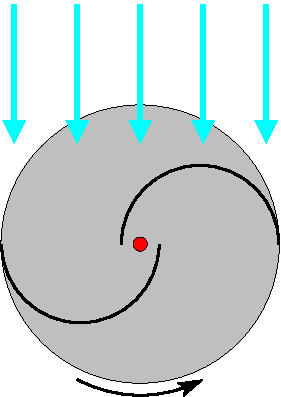
The Darrieus design the blades move through the air in a circular path. This circular path changes the local wind that the blade sees. The aerodynamic forces acting on blade, lift and drag can then be decomposed into a tangential force acting along the path of the rotor and a radial force pointed towards the centre of rotation.
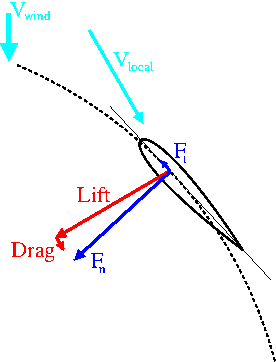
The significant variation in the tangential force - torque - during each revolution was reduced by taking the Darrieus design and adding a 120 degree helical twist to the blades. This feature spreads the torque evenly over the entire revolution.
A two dimensional numerical investigation is used for the aerodynamic behavior of a three-bladed Darreius vertical axis wind turbine was undertaken using the WMB3 solver at the University of Glasgow. This type of simultation offers good performance predictions on a slice horizontally through the vertical axis wind turbine was long as the slice is not close to the tips of the blade.
The airfoil thickness affects the aerodynamic performance. For symmetric airfoils, the section with relative thickness of 15 precent has the highest lift-drag ratio, and a much wider range of high lift-drag ratio, and is hence the airfoil of choice for calculations. A two dimensional computational domain was designed to simulate the flow in a cross section through the turbine. The computational domain was scaled so that the chord of the turbine blade was of length. An inner background grid was used to resolve the wake of the turbine. Inflow boundary conditions are applied to the left hand side while the outflow is applied to the right hand side.The other two side had a symmetry boundary condition.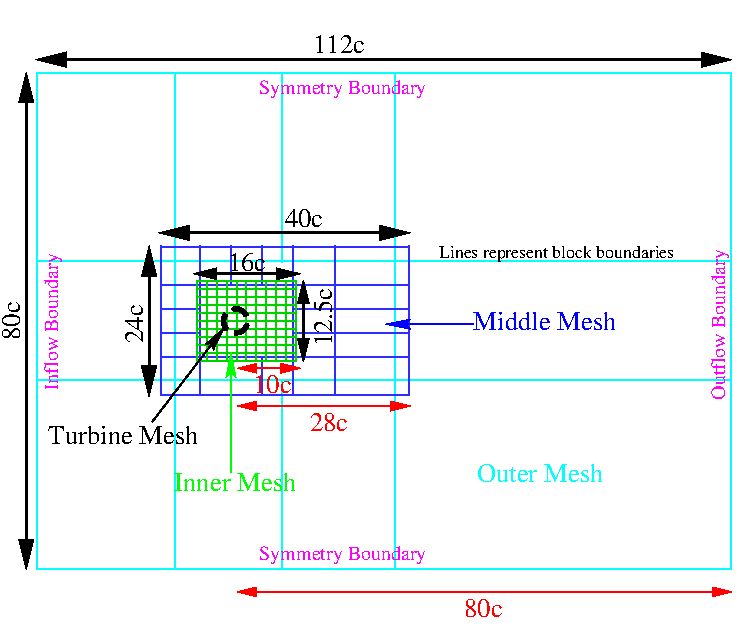
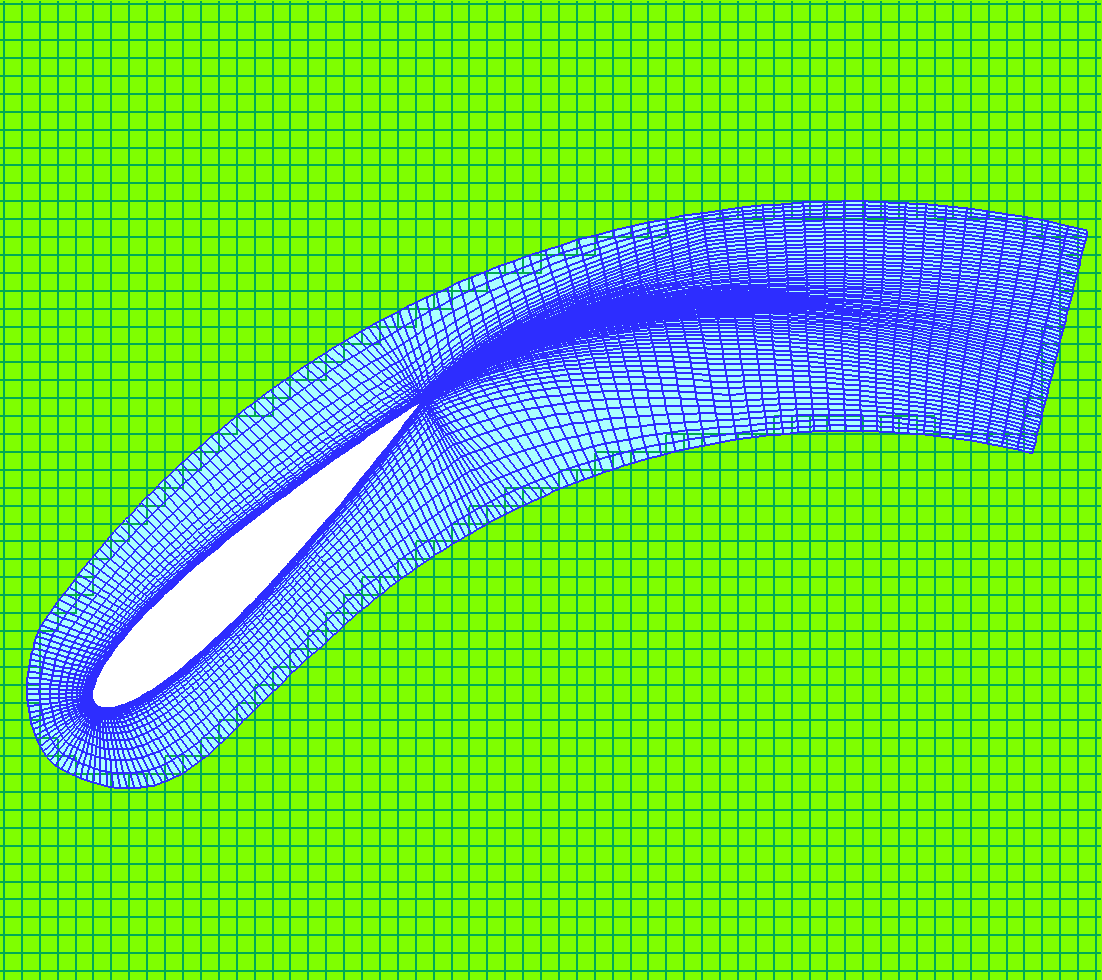
The animation shows the vorticity field for a complete revolution of the turbine. In the 12 o'clock position the blade encounters the wake of the preceding blade. At 8 o'clock the blade begins to stall. These vortices roll up and are shred downstream of the turbine.
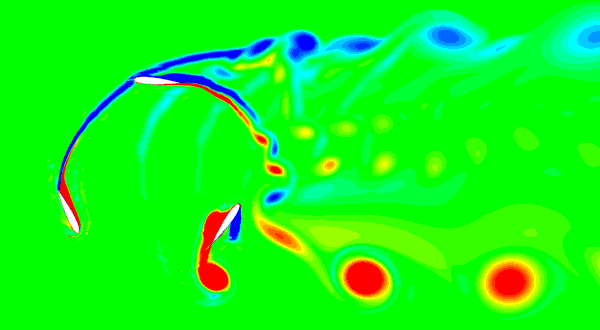
Contact:


